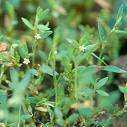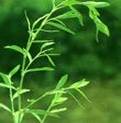Scientific Classification:
|
Other Common Names:
The other common names for herb knot grass are Centinode,Ninety-knot,Nine-joints,Allseed, Bird's Tongue, Sparrow Tongue, Red Robin,Armstrong,Cowgrass,Hogweed,Pigweed,Pigrush,Swynel Grass,Swine's Grass, Black strap, Iron weed, Prostrate knotweed, Surface twitch and wire weed. History


Description



Range
Knotgrass is an annual weed troublesome among cereals, sugar beet, root crops and on most arable soils. It is found throughout Britain and is said to grown at an altitude of even up to 1,800 ft.It is common in the vegetation cover and in the soil seedbank.It is located throughout the southeast United States, Arkansas, Texas, Oklahoma, and in the western United States. It is native to Louisiana.
Habitat
It prefers a habitat of light sandy soils and soils manured by sheep. It occurs on roadsides, waste ground, gardens and near field margins. It occurs in soils deficient in lime. While it is a plant of disturbed and trampled habitats, in urban situations it occurs in less trampled, paved areas.
Cultivation
Knotgrass can tolerate high salinity and a waterlogged environment. It has no tolerance of shade. New growth starts in early March and it stays green until the first frost. Knotgrass reproduces from rhizomes, stolons, and seeds. It can be easily established by sowing stolons in damp holes. If planted in water, knotgrass will remain green throughout the year. Shed knotgrass seeds are taken by birds but invertebrates are more important post-dispersal seed predators at certain times of year. Seed buried in soil gave 55% germination after 20 years and 4% after 50 years. Seeds broadcast onto the soil surface, ploughed to 20 cm and followed over a 6-year period of cropping with winter or spring wheat had a mean annual decline rate of 23%.The life span of knotgrass seeds in dry-storage was less than 15 years.
Knotgrass may flower throughout the year. The seeds may be gathered; however, they require a period of dormancy. The seeds yield their highest germination when temperatures are between 82 to 95° F and when they receive about 16 hours of light. The rate of ripening can be increased with dry storage at 122° F. Also, scarring the seeds with acid may increase germination. It is not recommended to mix knotgrass seeds with cool season grass seeds. In parts of the United States where cool season grasses dominate, the warm season grasses can be taken over because they develop slower than the cool season grasses. It is also recommended that seed not be moved more than 300 miles north, 100 miles east or west, or 200 miles south of its point of origin. It is said that ploughing and other deep cultivation favoured knotgrass, while shallow cultivations discouraged it.
Flowering Season
It blooms with white or pink flowers during late spring to early autumn.
Parts Used
The most essential parts of the plant which are of medicinal and commercial use are roots and seeds.Medicinal Applications

- Polygonum aviculare for treating mild respiratory catarrh (mucous) and also used as an expectorant for coughs, colds and bronchitis, and for alleviating inflammation of the mucous membranes of the mouth and throat.
- Knotgrass otherwise known as Mexican Sanguinaria, having anti microbial properties can be used against gingivitis.
- Knotgrass herb and flowers were also used in Swedish traditional medicine to treat inflammatory diseases and wounds.
- Knotgrass was traditional used as a remedy against arthritis and joint inflammation conditions.
- It also contains slica, which may help with elasticity and strength of the connective tissues inside the body and joints.
- It is a mild and quite diffusive relaxant and stimulant, antispasmodic in action and of decided usefulness in flatulent colic and painful menstruation.
- As an astringent it is used for haemorrhages, including bleeding piles, and diarrhoea.
- It also helps to expel urinary tract stones.
- The astringent property of the plant helps in diarrhoea, bleeding piles and all haemorrhages.
- The decoction was also administered to kill worms.
- The fresh juice has been found effectual to stay bleeding of the nose, squirted up the nose and applied to the temples, and made into an ointment it has proved an excellent remedy for sores.
- Knotgrass is an important constituent in the diet of skylarks and linnets.
- The plant is an astringent, coagulant, diuretic and expectorant.
Quotes
Shakespeare in his Midsummer Night's Dream speaks of this plant as 'the hindering Knotgrass,' referring to the belief that its decoction was efficacious in retarding the growth of children and the young of domestic animals.
Salmon states "Knotgrass is peculiar against spilling of blood, strangury and other kidney affections, cools inflammations, heals wounds and cleanses and heals old filthy ulcers. The Essence for tertians and quartan. The decoction for colick; the Balsam strengthens weak joints, comforts the nerves and tendons, and is prevalent against the gout, being duly and rightly applied morning and evening." In the Grete Herball (1516) it is called Swynel Grass.
Folklore and Myths
Knot grass is used in spells to bind and restrict someone, to control a person's movements in some way, or to symbolically tie things down. The Iroquois carry powdered knot grass in a packet to draw love; they say that slipping some into a prospective mate's tea will make you seem more attractive. It also says to Bind a Lover to You, place a Photo of you and a Photo of your lover on a piece of red cloth, face-to-face, along with knot grass, periwinkle, rose Petals, and love me sachet powder and then fold the cloth over, tie it with a Shoelace from each party, dress the packet with Love Me Oil, and keep it under your bed.

